Overview: One of many abandoned feldspar prospects in Central CT, this particular location has been a popular beryl collecting site for several decades. This location is one of the most visited pegmatites in Connecticut if not all of New England and is somewhat of a local classic for beryl.
Large, sharp blue aquamarine beryls have been found both in the dumps and in solid pegmatite at this location. A variety of other minerals can be found at this site as well, including some rare species.
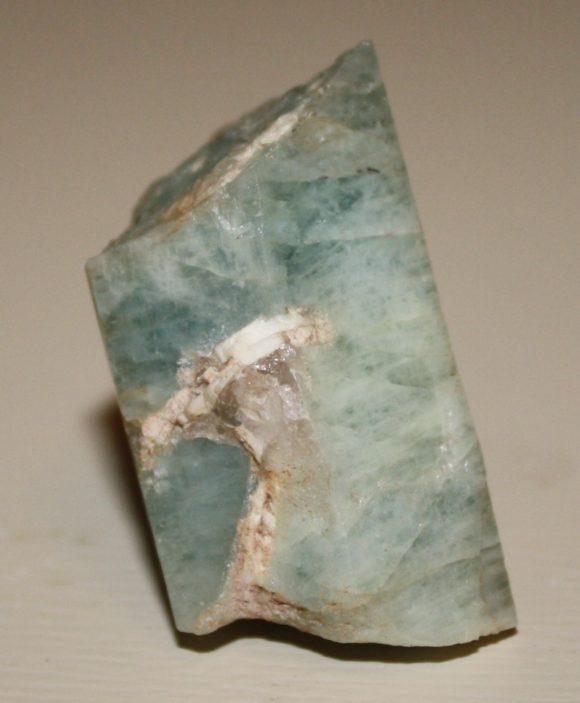
37mm tall beryl dug in 2009 by CT field collector Adam Berluti
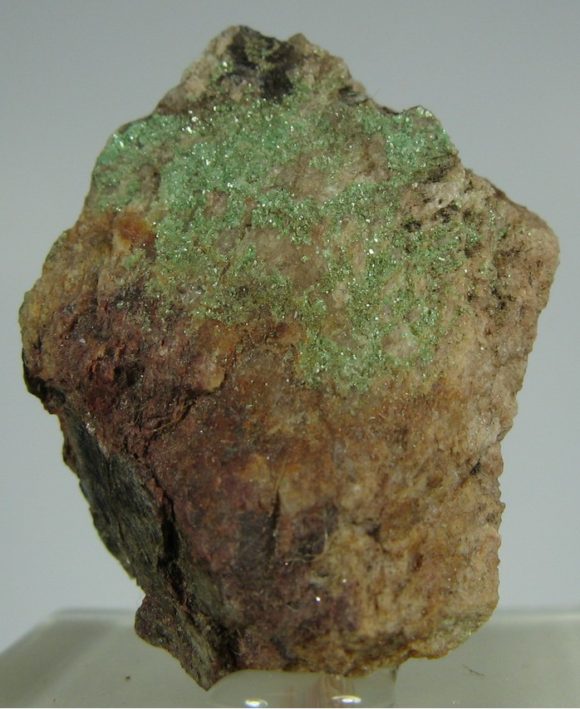
2cm tall specimen covered with minute green Torbernite crystals. Roger Sedgwick collection. (Source: https://www.mindat.org/photo-494986.html)
This is one of the first sites many collectors in CT visit, and it is not hard to find something worth bringing home. The collecting status of this location is unclear (and with all sites featured on this website, you are responsible for obtaining permission and checking current property ownership), and as of early 2021 it remains unposted and is still frequented by diggers in the area.
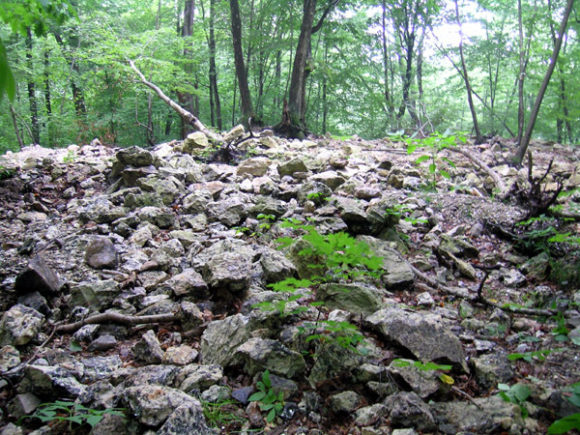
Quarry dumps at the Simpson. Dig through these dumps to find nice aquamarine beryl crystals as well as many other pegmatite minerals like almandine garnet, schorl, torbernite, and columbite. (Source: https://www.mindat.org/photo-123808.html. Image copyright 2004 Peter Cristofono)
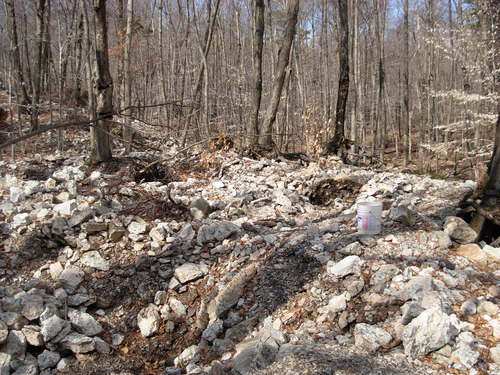
Quarry dumps with foliage down. Taken April 2nd 2011 by Matthew Kimball. (Source: https://www.mindat.org/photo-390478.html)
Getting there: This mine is easy to get to. Park at the end of Michele Drive in Portland, CT. You will see a small path through the woods to your left. Follow the path until you see the very obvious big quarry dumps approximately where the pin in the photo is. You will have to cross some swampy areas. The location is approximately a quarter of a mile northeast from where you park. A word of caution, the collecting status of the location is not officially known. Many people dig here though it may be private property. The locality has been frequented by collectors on a near daily basis for decades.
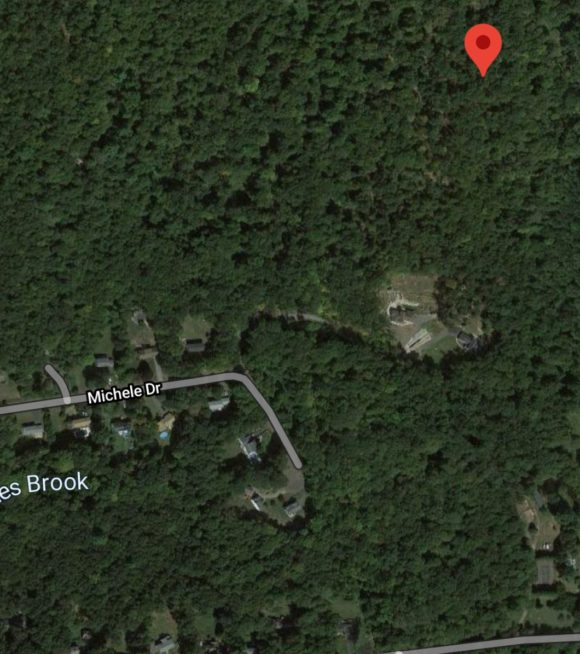
Location of the Simpson Quarry, and location of beryl crystals.
Collecting: There are two main approaches to digging this spot- dump digging and hard rock mining. At minimum you will want to bring a shovel, crack hammer and chisels to the location but other tools that may be useful are hand rakes, a sledgehammer, sifters, small bags, and a UV light. Many rare minerals are found at this site, some of which, autunite and hyalite, are highly fluorescent. The mosquitoes get terrible at this spot in the summer, be prepared with lots of bug spray. Pegmatite is an extremely hard rock and will take persistence to break. The mica and quartz can be extremely sharp so wearing gloves is a good idea. Do not get discouraged if you have a difficult time working the hard rock. Digging pegmatite takes immense skill and practice. It is something that experienced New England diggers take years to hone.
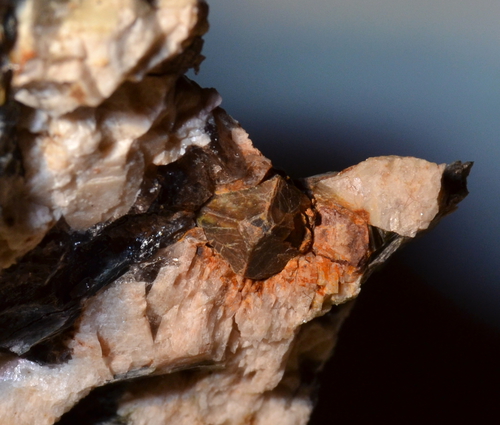
A large 6mm microlite dug at Simpson by Andrew Kruegel. A unique feature about this pegmatite is the abundance of this rare tantalum mineral. This example shows the typical form and color. A loupe can help you spot these more easily. (Source: https://www.mindat.org/photo-525514.html)
Geology and Mineralogy: This locality is very similar to the other Paleozoic pegmatite in CT. It is linear in shape and not very pocket rich. This pegmatite also contains a great deal of heavier rare elements. Collectors often visit this site only interested in beryl, but perhaps more notable to the mineralogist is the abundant microlite found in sugary albite. Microlite contains the rare element Tantalum. These microlite occur in brown modified octahedral crystals. If you are interested in them, familiarize yourself with them on mindat.org. Microlite is often somewhat radioactive and will produce a radiation halo, which is a good way to spot them.
Sources: